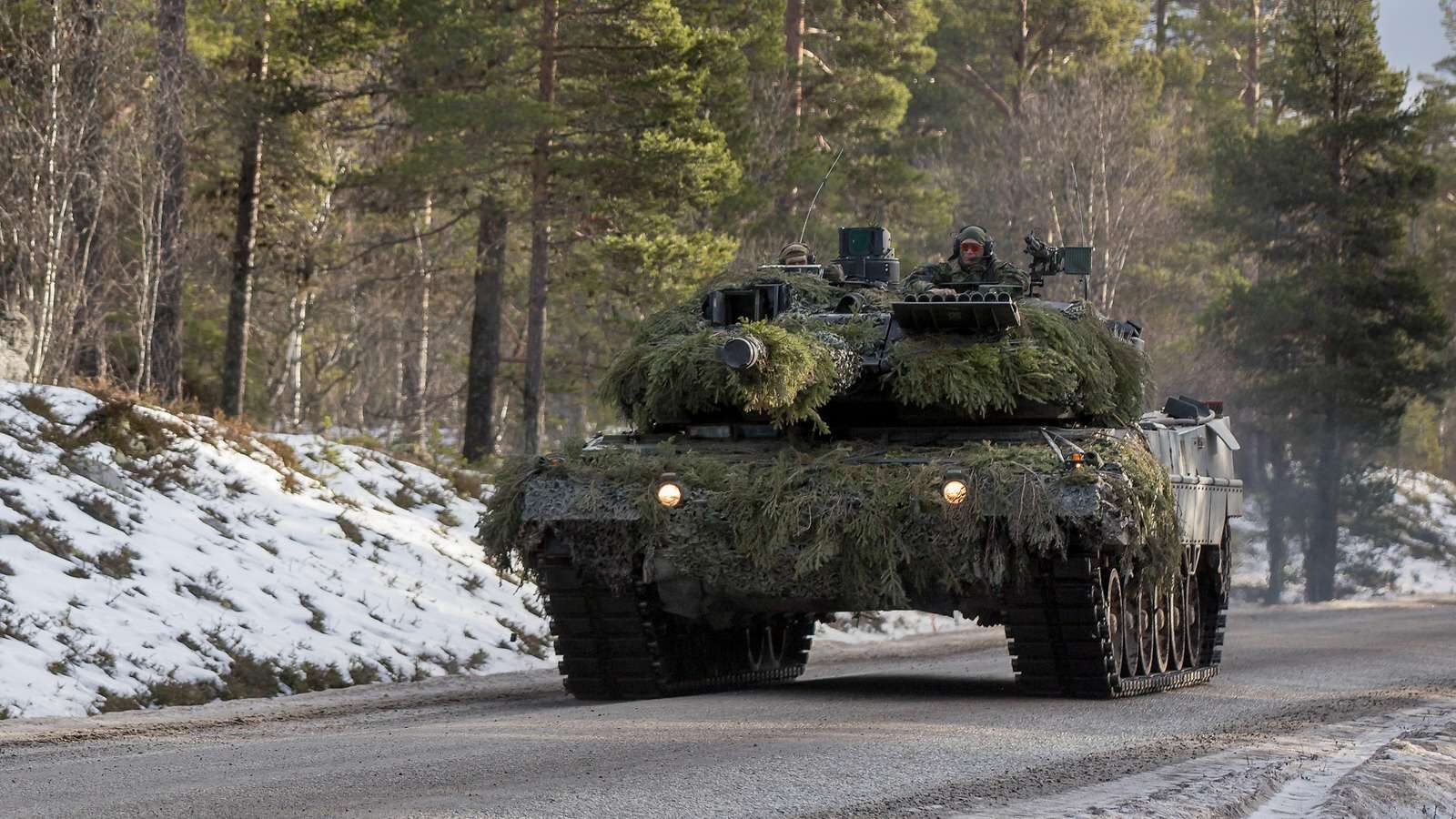
Germany leads an international Leopard main battle tank coalition that will enable Ukraine to greatly enhance land warfare capabilities (German Army on Twitter)
BELFAST — Eleven countries have signed on to send tanks to Ukraine as military equipment donations ramp up in anticipation of a potential spring offensive, according to US Chairman of the Joint Chiefs of Staff Mark Milley.
Speaking in Brussels today after 54 defense ministry delegations met at the latest sitting of the Ukraine Defense Contact Group, Milley also noted that 22 countries have pledged infantry fighting vehicles, while 16 nations have committed to send Kyiv “artillery and munitions.” A total of nine countries are supporting the supply of air defense systems.
“Ukraine will integrate recent commitments of armored vehicles, infantry fighting vehicles and tanks with fires that achieve the effect of synchronized ground maneuver,” said Milley.
He did not list the 11 tank suppliers specifically, but did refer to the growing number of countries partnering on the international Leopard main battle tank coalition involving Canada, Denmark, Germany, the Netherlands, Norway, Poland, Portugal and Spain.
Milley did confirm, however, that the US, Czech Republic and the Netherlands are currently “in the process” of delivering refurbished Soviet-era T-72 tanks. The US has pledged a contingent of Abrams main battle tanks as well.
Ukraine has been consistently requesting that supply partners provide tanks, fighter jets and air defense systems to counter a new Russian offensive expected in the spring, but US Defense Secretary Lloyd Austin pushed back on any notion that a large scale air campaign will be launched imminently by the Russian Air Force.
“In terms of whether or not Russia is massing its aircraft for some massive aerial attack, we don’t currently see that,” he said. “We do know that Russia has a substantial number of aircraft in its inventory and a lot of capability left. That’s why we’ve emphasized that we need to do everything that we can to get Ukraine as much air defense capability as we possibly can.”
Existing air defense supplies include US Patriot platforms and Italy and France offering SAMP/T systems, but those are “not enough,” according to Austin, adding that the US and Contact Group partners will “keep pushing until we get more” in order to best face down Russian threats. The SAMP/T long-range surface-to-air missile defense system has been developed for France and Italy by Eurosam, a joint venture between European weapons maker MBDA and French manufacturer Thales, to counter ballistic missiles, high-speed tactical missiles, UAVs and “highly maneuvering aircraft, in a saturation attack scenario,” according to Thales company literature.
“Our effort currently is to get these [air defense] capabilities into country as quickly as we can, and then integrate those capabilities,” he explained.
He said Ukraine had done an “incredible job” intercepting “recent” rocket and missile fires.
Concurring with US President Joseph Biden’s position on declining to provide American fighter jets to Ukraine, Austin said that he had “no announcements” to make on the matter.
“We’re going to continue to work with Ukraine to address Ukraine’s most pressing needs. They’re contemplating an offensive in in the spring… so we have a lot to get done,” he added.
Discussions around fighter jets continue to be highly sensitive politically, as Washington refuses to entertain F-16 aircraft reaching Kyiv. At the other end of the spectrum, France has previously said there is “no taboo” around the fighter jet issue, though it has still to action a decision. Recently the UK said it would provide training for Ukrainian fighter pilots on Western platforms, but that effort was designed with Ukraine’s post-war military in mind. A lack of progress across the NATO alliance on the matter generally aligns with fears of escalation.
“The issue of aircraft [fighter jets] is not the most urgent issue now,” said NATO Secretary General Jens Stoltenberg during a press conference today ahead of a NATO defense ministers meeting. “But it is an ongoing discussion. And as I’ve said before, we have ongoing consultations among allies on the type of systems allies should deliver to Ukraine. That will continue to evolve.”
Navy jet trainer fleet operations remain paused after engine mishap
One week after the incident, a Navy spokesperson says the service is continuing to assess the fleet’s ability to safely resume flight.


























